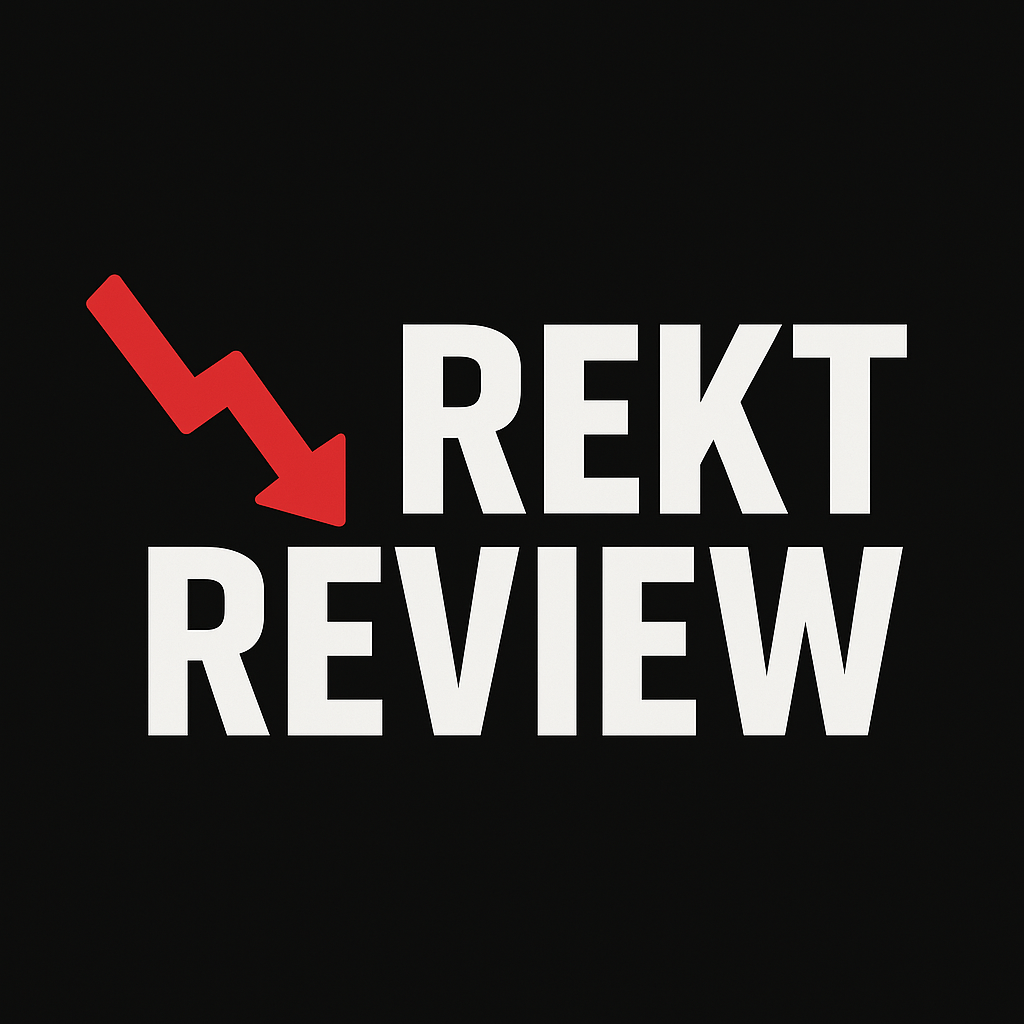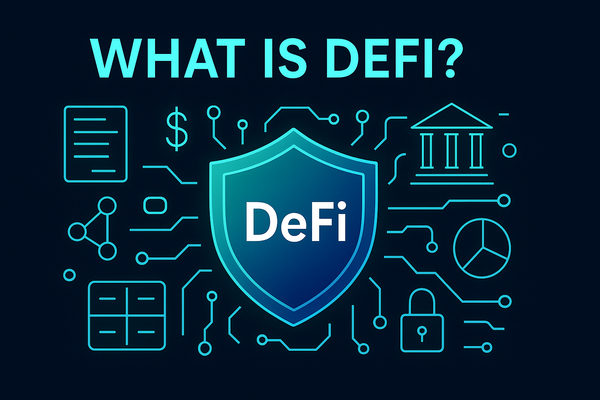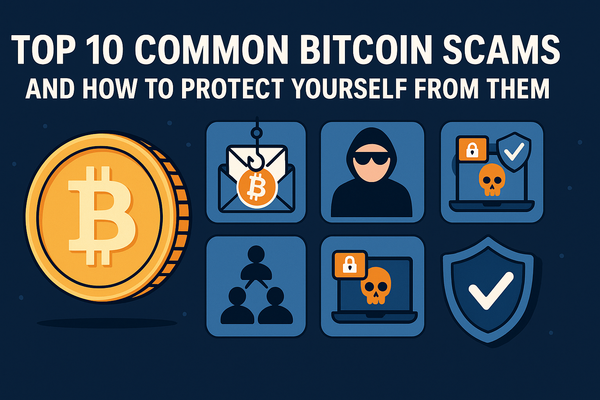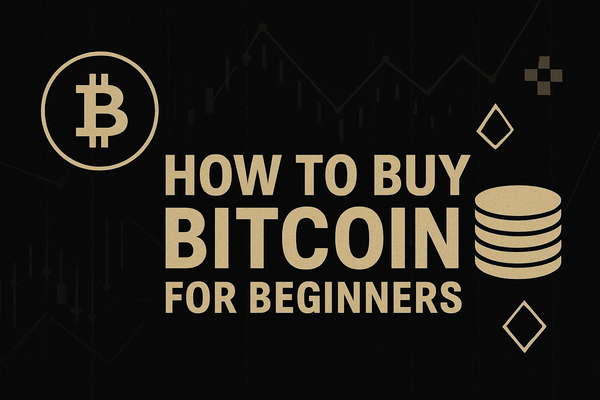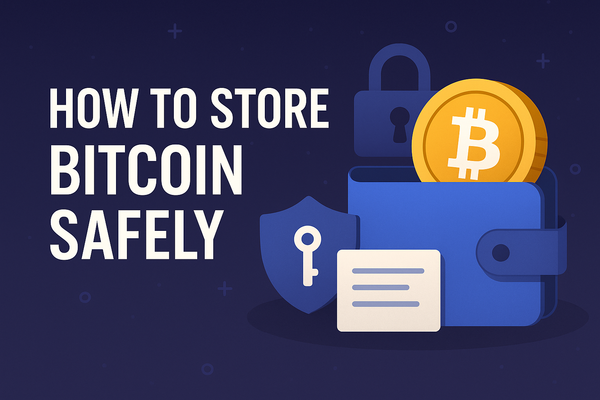Is Bitcoin Digital Gold? A Modern Comparison to the Ultimate Store of Value
Bitcoin is often called "digital gold"—but does it live up to the title? This article explores how Bitcoin compares to gold as a modern store of value.
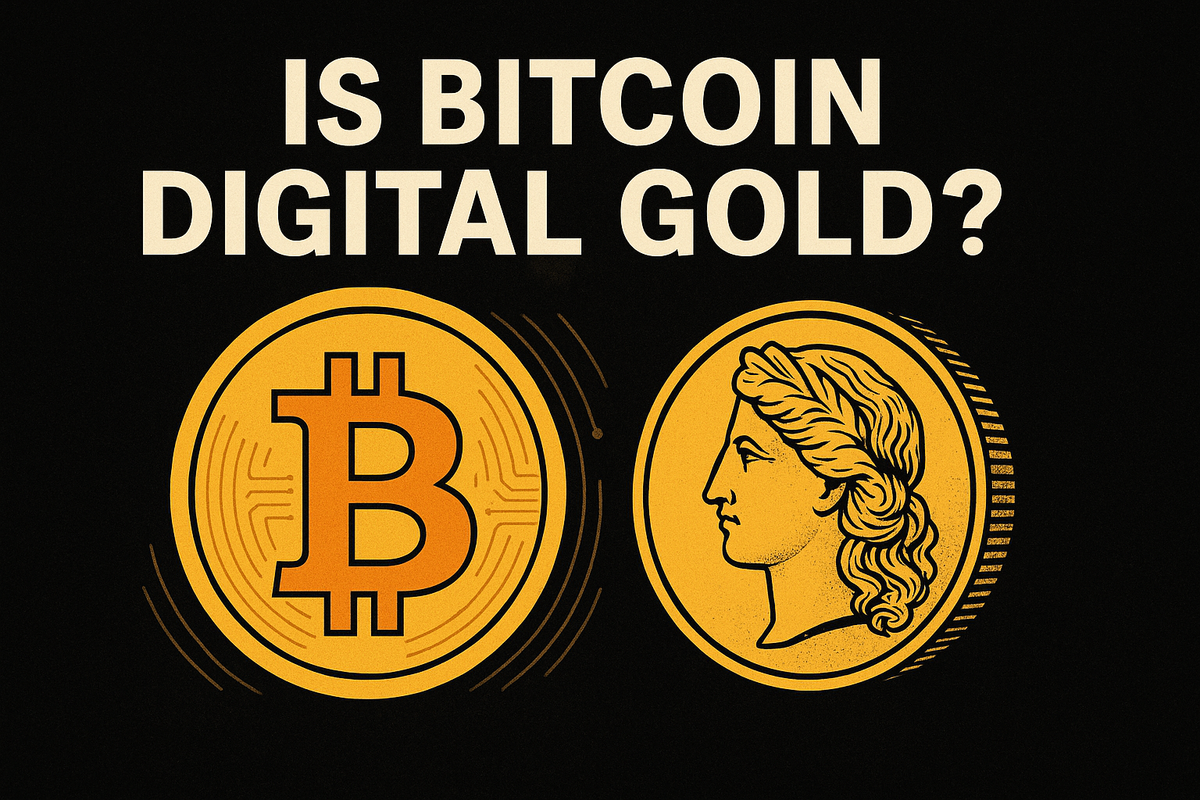
Bitcoin has earned many titles since its inception in 2009 — from a “peer-to-peer electronic cash system” to a speculative investment, to what many now call “digital gold.” This modern analogy links Bitcoin to one of the oldest stores of value in human history: physical gold. While the comparison might seem odd at first — a digital asset measured in code and hashes likened to a tangible metal dug from the ground — it’s become a dominant narrative in both crypto and traditional financial circles.
The idea isn’t purely symbolic. Bitcoin and gold share traits like scarcity, decentralization, and resistance to inflation. Both assets have been embraced by investors seeking to hedge against macroeconomic uncertainty and currency debasement. But critics argue that Bitcoin’s volatility, regulatory status, and lack of intrinsic value make the gold comparison overhyped or premature.
So, is Bitcoin really digital gold — or just another speculative bubble wrapped in gold-colored marketing? In this article, we’ll break down the similarities and differences between these two assets, trace the origin of the digital gold narrative, and evaluate whether Bitcoin truly deserves the comparison.
The Origins of the “Digital Gold” Narrative
The comparison between Bitcoin and gold didn’t emerge overnight. It evolved gradually as Bitcoin's underlying properties — especially its fixed supply — invited parallels to precious metals. In the early days of Bitcoin, its use case as digital cash was emphasized. But as price volatility limited its practicality for everyday transactions, attention shifted toward its role as a store of value.
One of the earliest seeds of the digital gold idea came from Nick Szabo, a computer scientist and cryptographer who created a pre-Bitcoin concept called Bit Gold in the late 1990s. Although Bit Gold was never implemented, Szabo's writings foreshadowed many of Bitcoin’s economic principles — especially the idea of a scarce, decentralized, and unforgeable digital asset.
As Bitcoin matured, especially after the 2013 and 2017 bull markets, investors began viewing it less as a currency and more as an asset class. Goldbugs, institutional investors, and macro strategists started to take notice. By the time Bitcoin began climbing past $10,000 and central banks around the world ramped up money printing, the "digital gold" moniker became mainstream.
This narrative gained further traction with prominent figures like Michael Saylor and Paul Tudor Jones, who explicitly compared Bitcoin to gold in public statements. Today, the term "digital gold" is as much a marketing shorthand as it is a philosophical claim — one that continues to shape how people perceive and value Bitcoin.
Comparing Bitcoin and Gold: Key Similarities
At first glance, gold and Bitcoin couldn’t be more different — one is a shiny metal with millennia of history, the other a digital asset created in the 21st century. Yet, they share several critical attributes that support the “digital gold” narrative.
Scarcity is the foundation of the comparison. Gold’s value has always been tied to its limited supply and the difficulty of extracting it from the earth. Bitcoin replicates this digitally with a hard cap of 21 million coins, enforced by code and consensus. This predictable issuance schedule mimics gold’s slow mining rate and makes Bitcoin immune to inflationary monetary policies.
Both assets also offer durability and resistance to degradation. Gold doesn’t corrode or decay, and Bitcoin, being digital, doesn’t degrade over time — provided private keys are securely managed. In this way, both are designed for long-term storage of value.
Portability and divisibility are areas where Bitcoin arguably excels. Transporting large amounts of gold across borders is logistically challenging. Bitcoin, on the other hand, can be sent globally in minutes, with transaction fees that are often cheaper than traditional banking systems. It’s also divisible down to 0.00000001 BTC, far beyond the practicality of shaving gold bars.
Finally, both assets are non-sovereign and decentralized, meaning they aren’t issued or controlled by governments or central banks. This makes them appealing to individuals seeking financial autonomy, particularly in regions plagued by currency devaluation or capital controls.
These similarities have positioned Bitcoin as a digital-era alternative to gold — a modern tool for wealth preservation in a world of economic uncertainty.
Key Differences: Why Bitcoin Isn’t Gold (Yet)
While Bitcoin shares many attributes with gold, critical differences highlight why it may not fully deserve the “digital gold” label — at least not yet.
First and foremost is volatility. Gold’s price has remained relatively stable over decades, making it a dependable store of value during times of crisis. Bitcoin, on the other hand, can swing by double-digit percentages in a single day. Such extreme price fluctuations undermine its reliability as a safe haven asset, especially for conservative investors.
Another major factor is regulatory clarity and institutional trust. Gold is universally recognized and deeply entrenched in the global financial system. Central banks hold it in reserves, and it plays a key role in monetary policy. Bitcoin, while gaining traction, still faces uncertain regulatory treatment in many jurisdictions. Its evolving legal status can introduce risk and hesitation among institutions.
Tangibility also matters. Gold is a physical commodity that doesn’t depend on electricity, internet access, or digital infrastructure. Bitcoin, being entirely virtual, is vulnerable to cyberattacks, hardware failures, and loss of access if private keys are misplaced. While some see this as a feature — allowing censorship resistance — it introduces technical complexities not present with gold.
Finally, market maturity is a differentiator. Gold has thousands of years of price discovery, liquidity, and infrastructure. Bitcoin, despite its progress, is still emerging. Its price is heavily influenced by sentiment, narratives, and speculation, which can distort its perceived value.
These differences don’t necessarily invalidate Bitcoin’s digital gold thesis — but they suggest it’s still evolving into that role, not firmly seated in it.
Institutional Adoption and Market Trends
One of the strongest arguments supporting Bitcoin’s claim as “digital gold” is the wave of institutional adoption that began in earnest around 2020. Major investors and corporations have not only legitimized Bitcoin as an asset class but also amplified its role as a store of value.
The turning point came when publicly traded companies like MicroStrategy began converting portions of their treasury reserves into Bitcoin. CEO Michael Saylor framed the decision as a hedge against inflation — a role historically played by gold. Soon after, Tesla and Square followed suit, fueling a new narrative around Bitcoin as a corporate reserve asset.
Hedge fund managers such as Paul Tudor Jones and Stanley Druckenmiller added credibility by comparing Bitcoin to gold in interviews and investment memos. Their interest signaled that Bitcoin was no longer just a retail-driven asset but was gaining traction among sophisticated investors.
Regulatory milestones have also helped. The approval of Bitcoin ETFs in jurisdictions like Canada and the U.S. has allowed traditional investors to gain exposure through familiar vehicles, without needing to manage private keys or use crypto exchanges.
Market behavior reflects this shift. Bitcoin’s correlation with risk assets remains, but its long-term trajectory increasingly mirrors that of gold — a slow, steady climb influenced by macroeconomic sentiment and institutional flows.
These developments suggest that Bitcoin is not only acting like digital gold — it’s being treated like it, too.
Institutional Adoption and Market Trends
One of the strongest arguments supporting Bitcoin’s claim as “digital gold” is the wave of institutional adoption that began in earnest around 2020. Major investors and corporations have not only legitimized Bitcoin as an asset class but also amplified its role as a store of value.
The turning point came when publicly traded companies like MicroStrategy began converting portions of their treasury reserves into Bitcoin. CEO Michael Saylor framed the decision as a hedge against inflation — a role historically played by gold. Soon after, Tesla and Square followed suit, fueling a new narrative around Bitcoin as a corporate reserve asset.
Hedge fund managers such as Paul Tudor Jones and Stanley Druckenmiller added credibility by comparing Bitcoin to gold in interviews and investment memos. Their interest signaled that Bitcoin was no longer just a retail-driven asset but was gaining traction among sophisticated investors.
Regulatory milestones have also helped. The approval of Bitcoin ETFs in jurisdictions like Canada and the U.S. has allowed traditional investors to gain exposure through familiar vehicles, without needing to manage private keys or use crypto exchanges.
Market behavior reflects this shift. Bitcoin’s correlation with risk assets remains, but its long-term trajectory increasingly mirrors that of gold — a slow, steady climb influenced by macroeconomic sentiment and institutional flows.
These developments suggest that Bitcoin is not only acting like digital gold — it’s being treated like it, too.
Challenges and Criticisms
Despite growing support for the digital gold narrative, Bitcoin still faces significant challenges that prevent full acceptance in that role.
One of the most common criticisms is its environmental impact. Bitcoin mining requires substantial computational power, consuming large amounts of electricity. While defenders argue that much of this energy comes from renewables or stranded power, environmentalists often compare Bitcoin’s carbon footprint unfavorably to that of gold, which has a long-standing but more familiar ecological cost.
Regulatory uncertainty also looms large. Governments around the world remain divided on how to treat Bitcoin. Some have embraced it with open arms, while others have restricted or outright banned its use. The potential for sudden regulatory shifts can introduce volatility and deter conservative investors.
Another challenge is security and user error. While the Bitcoin protocol itself is secure, users are still vulnerable to phishing scams, exchange hacks, or losing their private keys — all of which can result in irreversible loss. Gold, by contrast, can be stored in vaults or recovered in estate settlements, making it feel more accessible and less risky to many.
Lastly, there’s the issue of public perception. While gold is widely recognized as a stable and trustworthy asset, Bitcoin still struggles with reputational baggage from its early use in darknet markets and speculative manias. This perception gap makes it harder for some to see Bitcoin as a serious long-term store of value.
Until these challenges are addressed, Bitcoin’s claim to the “digital gold” title remains aspirational — not absolute.
Conclusion: Is Bitcoin Digital Gold?
Bitcoin may not be gold, but it’s certainly gold-like. Its fixed supply, decentralized nature, and growing reputation as a hedge against inflation give it many of the qualities that have made gold a trusted store of value for centuries. In an increasingly digital world, Bitcoin offers a modern, borderless alternative that resonates with younger investors and tech-savvy institutions.
Still, the comparison has limits. Gold’s stability, physical tangibility, and entrenched role in the global financial system give it a level of trust and maturity that Bitcoin is still working to earn. Price volatility, regulatory ambiguity, and security risks continue to challenge Bitcoin’s position as a true safe haven.
That said, the lines are blurring. Institutional adoption, regulatory progress, and increased infrastructure are rapidly closing the gap. If these trends continue, Bitcoin may not just be “digital gold” in metaphor — it could functionally replace some of gold’s role in the financial system.
For now, Bitcoin represents potential. It's not yet gold’s equal, but it may be the digital store of value that future generations prefer.
Is Bitcoin Digital Gold? FAQ
Bitcoin is often compared to gold because both are scarce, decentralized, and viewed as potential hedges against inflation and currency devaluation.
Bitcoin and gold are both finite in supply, not issued by governments, and used as stores of value. They’re also resistant to censorship and counterparty risk.
Gold is a tangible asset with centuries of trust. Bitcoin is digital, more volatile, and still evolving in terms of regulation and infrastructure.
Bitcoin offers advantages in portability and divisibility, but its volatility and shorter track record make it riskier than gold for some investors.
Some investors are allocating to Bitcoin as a complement or alternative to gold, but whether it fully replaces gold remains a topic of debate.
Bitcoin’s price is driven by supply and demand, investor sentiment, macroeconomic factors, and its perceived value as digital property or a store of value.
